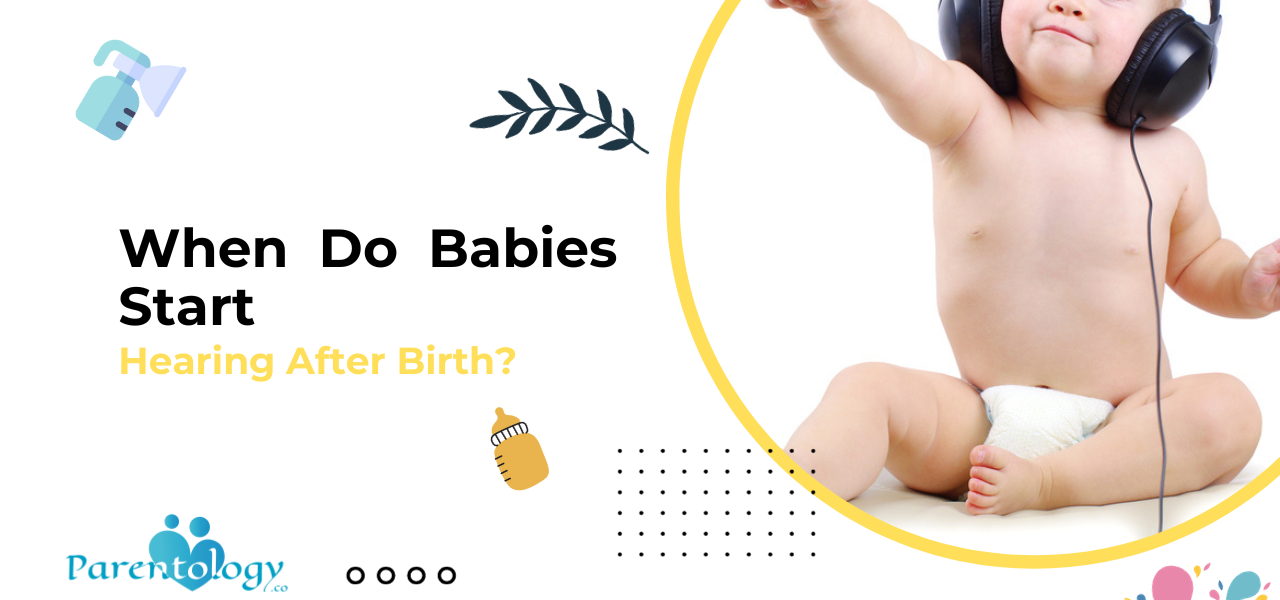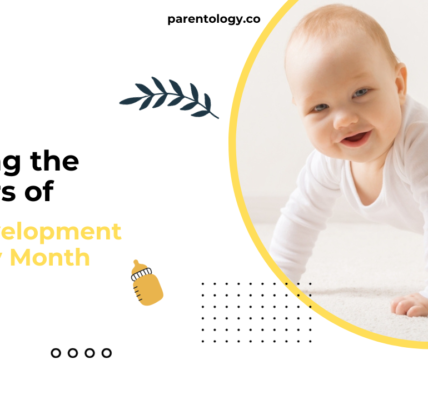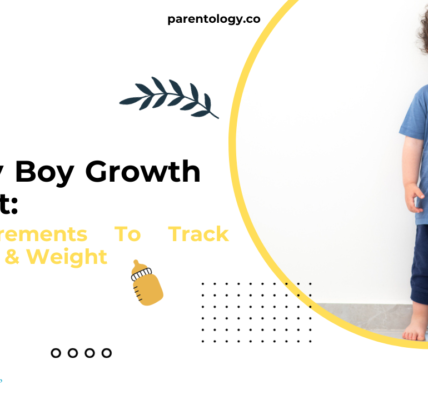When Do Infants Start Hearing: A Comprehensive Guide to Your Baby’s Auditory Development
The miracle of childbirth marks the beginning of a myriad of developmental milestones for your newborn, and one of the most captivating aspects is their sense of hearing. Understanding when infants start hearing is crucial for fostering a nurturing environment. In this detailed guide, we explore when infacts start hearing and answer key questions surrounding this enchanting phase.
When Do Infants Start Hearing After Birth ?
The Early Days: Sensory Exploration
In the initial weeks after birth, when do infants start hearing and embark on a sensory exploration of the world. While their hearing is still in its infancy, they possess a remarkable ability to tune into sounds, particularly those with higher frequencies. This early responsiveness lays the groundwork for their future auditory experiences, and notably, newborns exhibit a heartwarming preference for the familiar voices of their parents. This preference goes beyond mere recognition; it forms the basis of a profound bond, fostering a sense of security and comfort.
A Symphony of Growth: Weeks 4-6
As the baby reaches the one-month mark, a symphony of growth unfolds in their auditory system. Rapid development takes place, rendering them more responsive to a diverse range of sounds. Lullabies, gentle music, and soothing whispers become key players in this symphony, captivating the baby’s attention. It is during this period that the infant’s ability to distinguish between different tones and pitches begins to emerge. The auditory landscape expands, introducing the baby to a world of delightful sounds.
The Two-Month Milestone: Coos and Giggles
Around the second month, infants transition into a phase of increased vocalisation, expressing their delight through coos and giggles. This marks a significant step in their auditory development, showcasing a heightened awareness and engagement with the sounds around them. Parents, in turn, find immense joy in interactive exchanges with their babies, creating a delightful and bonding experience through the shared language of laughter and cooing.


Three Months In: Responsive Babbling
At the three-month mark, babies become even more responsive, displaying their curiosity about the world through active engagement with auditory stimuli. The ability to turn their heads towards the source of sounds indicates a growing understanding of spatial orientation and a desire to explore their surroundings. Interactive games involving sound, such as peek-a-boo or gentle rattles, become valuable tools for stimulating their auditory senses and encouraging developmental milestones.
The Four-Month Mark: Musical Recognition
Around four months, the infant’s affinity for music becomes increasingly apparent. They respond to rhythmic beats and melodies, showcasing an evolving ability to recognise and appreciate auditory stimuli. This period presents a wonderful opportunity for parents to introduce musical elements into the baby’s environment, fostering a connection between auditory experiences and the joyous world of music.
Halfway to Six Months: Babbling Conversations
By the fifth month, babies engage in babbling conversations, mirroring the cadence and rhythm of adult speech. This charming development signifies a growing understanding of language patterns. Positive responses from parents to these vocalisations encourage further language exploration, contributing to the baby’s emerging communication skills.
Six Months and Beyond: Language Comprehension
Approaching the six-month milestone, the baby’s ability to comprehend language becomes more evident. Responses to their name and understanding simple commands mark the beginning of a journey into language development. This pivotal period lays the foundation for continued linguistic growth, setting the stage for meaningful communication in the future.
Sensory Integration and Emotional Bonding:
In the early weeks, as infants explore the world through sound, their sensory integration is a key focus. The recognition of familiar voices not only signifies auditory responsiveness but also contributes to the emotional bonding between parents and their newborns. This emotional connection is a fundamental building block for a secure and trusting relationship.
Sound Localization Skills:
Around the one-month mark, the baby’s auditory system undergoes refinement, enhancing their ability to localise sounds. This newfound skill allows them to turn towards the source of a sound, showcasing early signs of spatial awareness. Parents may notice their baby’s curiosity as they actively seek out and engage with auditory stimuli from different directions.


Development of Auditory Memory:
As infants progress through the early months, their auditory memory begins to develop. Repetitive exposure to certain sounds or musical cues can be internalised, leading to recognition and response. This aspect of auditory memory contributes to the formation of associations between specific sounds and comforting experiences, reinforcing positive auditory patterns.
Social Interaction through Sounds:
The emergence of coos and giggles around the second month not only reflects heightened auditory awareness but also serves as a means of social interaction. Infants engage in delightful exchanges of sounds with caregivers, fostering a sense of reciprocity and shared joy. This early form of communication lays the groundwork for future social interactions and bonding.
Motor Coordination and Musical Expression:
Around four months, the connection between auditory development and motor coordination becomes apparent. Infants may exhibit rhythmic movements or gestures in response to music, indicating a linkage between auditory stimuli and physical expression. This integration of motor skills and musical recognition showcases the holistic nature of sensory development.
Language Exposure and Multilingual Environments:
Beyond the six-month mark, exposure to diverse languages becomes influential in language comprehension. Infants raised in multilingual environments may exhibit an early sensitivity to linguistic variations, contributing to a broader understanding of language structures. This exposure lays the foundation for later language acquisition and cognitive flexibility.


Responsiveness to Environmental Sounds:
As the auditory system matures, infants display heightened responsiveness to environmental sounds. Whether it’s the rustling of leaves, the gentle hum of household appliances, or the patter of raindrops, babies become attuned to the intricacies of the world around them. This sensitivity broadens their auditory experiences, fostering a connection between the familiar and the novel.
Introduction to Interactive Sound Toys:
Introducing interactive sound toys around the four-month mark can further stimulate the auditory senses. Toys that produce varied sounds upon touch or manipulation engage infants in interactive play, enhancing their cognitive and sensory-motor skills. This intentional exposure to different auditory stimuli contributes to a diverse and enriching auditory environment.
Transition to Verbal Communication:
Around the sixth month, infants may exhibit a transitional phase towards verbal communication. While they are not yet forming coherent words, they may experiment with consonant-vowel combinations. Encouraging these babbling conversations through responsive interactions establishes a supportive environment for the eventual development of language and communication skills.
Individual Variations in Auditory Development:
It’s important to note that individual variations exist in infants’ auditory development. Some babies may exhibit accelerated progression in certain aspects, while others may follow a slightly different timeline. Recognising and celebrating these individual differences contributes to a holistic understanding of auditory development in the early stages of life.
FAQs About When Do Infants Start Hearing
1. Is hearing fully developed at birth?
No, a newborn’s hearing is not fully developed at birth. While they can detect sounds, their auditory system undergoes significant growth in the early months.
2. How can I stimulate my baby’s auditory development?
Engage in gentle conversations, sing lullabies, and introduce soft music. These activities foster a rich auditory environment.
3. When should I be concerned about my baby’s hearing?
If you notice a lack of responsiveness to sounds or if your baby consistently fails to react to loud noises by six months, consult a paediatrician for a hearing evaluation.
4. Can premature babies experience delays in hearing development?
Premature babies may have a delayed onset of hearing development, but interventions and support can mitigate potential challenges.
5. What role does parental voice play in auditory development?
Babies often recognize and respond to the voices of their parents early on. Regular positive interactions with parents contribute to healthy auditory development.
6. Are there specific sounds that promote auditory growth?
Soft, rhythmic sounds like lullabies and nature sounds can be soothing and beneficial for auditory stimulation.
7. Can exposure to loud noises harm my baby’s hearing?
Prolonged exposure to excessively loud noises can be detrimental to a baby’s developing ears. Maintain a calm and peaceful auditory environment.
8. How can I incorporate music into my baby’s routine?
Play gentle, melodic music during quiet moments and create a relaxing atmosphere to encourage your baby’s appreciation for auditory stimuli.
9. Are there signs of hearing milestones I should look for?
Look for increased responsiveness to sounds, turning towards voices, and the development of cooing and babbling as positive signs of hearing milestones.
10. What role does hearing play in language development?
Hearing is fundamental to language development. Responsive interactions, talking, and reading to your baby contribute to their language comprehension skills.
Conclusion
In conclusion, the journey of when infants start hearing is a captivating exploration into the early stages of a child’s sensory development. By understanding these milestones and actively engaging with your baby, you contribute to the creation of a rich auditory environment that fosters healthy growth and development. Embrace each coo, giggle, and babble as a melody of your baby’s evolving world.
For more insights into parenting and child development, visit Parentology





